 |
| Chuck Norris vs Communism |
| Mara Adina, producer of Chuck Norris vs. Communism |
 |
| Screen shot from Chuck Norris vs. Communism |
The radical notion that women like good movies
 |
| Chuck Norris vs Communism |
| Mara Adina, producer of Chuck Norris vs. Communism |
 |
| Screen shot from Chuck Norris vs. Communism |
 |
| Children of Men (2006) |
The “Plague” of Infertility in Alfonso Cuarón’s Children of Men by Carleen Tibbetts
Women can’t get pregnant anymore and nobody knows why. This the central lamentation in Alfonso Cuaron’s 2006 dystopian film Children of Men, based on P.D. James’s novel. Set in England in the year 2027, this is the story of the human race entering its final phase. Cuaron brings us into Orwellian territory in which nations worldwide have fallen as a result of war, disease, and famine. Britain remains a sort of lucrative last bastion in these end times and people across the globe are scrambling to get in.
 |
| Sarah from Inside (2007) |
Inside: French Pregnant Body Horror at Its Finest by Deirdre Crimmins
Horror films have a unique way of showcasing exactly what we fear, but they often do so in a subtle way. While is it goes without saying that ax-wielding maniacs are to be feared, these films often slyly expose the issues that our society is too shy to deal with head on. In the 2007 French horror film Inside (directed by Alexandre Bustillo and Julien Maury), fertility, reproduction, and infant loss are dealt with in a refreshingly direct and uncompromisingly bloody outcome, with no room for subtlety.
 |
| Robin in How I Met Your Mother |
How I Met Your Mother: One of the Few TV Shows to Explore a Childfree Life for Women by Megan Kearns
HIMYM suffers many gender problems. Yes, it infuriated me Lily received so much backlash when she went to LA to pursue her dream of an art career. Almost everything Barney says or does – his sexist stereotypes, objectification of women, and fat-shaming – pisses me off. And yes, it bugs me that Robin’s unconventional female personality of Scotch drinking, hockey loving, cigar smoking and gun ownership has been pinned on her father raising her as a boy…even going so far as to name her Robin Charles Scherbatsky, Jr. But the show hasn’t fallen into the sexist trap that a woman isn’t a “real” woman without a baby.
 |
| Buffy comics, Season 9 |
Buffy Season 9: Sci-Fi Pregnancies and the Story that Almost Was by Pauline Holdsworth
Nikki Wood—New York punk slayer and the mother of ex-Sunnydale High principal Robin Wood—had been absent from the Buffyverse for a long time. So it’s a bit of a surprise when she shows up in the opening scenes of “On Your Own,” the second volume of the Season 9 Buffy the Vampire Slayer comic books. She’s being held off the edge of a tall building by the throat, pumped full of sedatives that have taken away her powers for a Council-mandated rite of passage. She’s pregnant.
 |
| Peekaboo: Still born. Still loved |
Stillbirth. Still Ignored by Debbie Howard [Trigger Warning]
I completed my short drama Peekaboo nearly two years ago, but I started writing it about three years before that. I had two friends who had experienced baby loss, one to miscarriage and one who had given her baby up for adoption. I had a dream one night that merged these two stories together; this was the beginning of Peekaboo, which is about a couple who has lost three babies to stillbirth. I wrote a first draft of the script then started researching in great detail as I developed the script. I was shocked to discover that hardly anything had been made about this subject before.
 |
| Tell Me You Love Me (2007) |
Infertility and Miscarriage in HBO’s Tell Me You Love Me by Stephanie Rogers
Perhaps what I found interesting, and even important, especially as a woman starting to understand how feminism fit into my life in a practical way, were the gender dynamics at play in Palek and Carolyn’s pregnancy struggles. Throughout the ten-episode arc, Carolyn basically treats Palek as a sperm donor, and his complaints about the lack of intimacy in their relationship stem from that—he wants feeling and emotion attached to making love with his wife; yet Carolyn sees that as unimportant, often demanding that he provide her with sex whenever she asks for it.
 |
| Kee, played by Clare-Hope Ashitey |
The Exploitation of Women in Alfonso Cuarón’s Children of Men by Amanda Rodriguez
Children of Men‘s depiction of women as props, tools, symbols, or cardboard underscores the notion that women’s true purpose is reproduction, and when women can’t reproduce, they’re not only useless, but society itself collapses under the burden of their neglect of duty. Despite many of the intriguing themes this film explores (including a scathing denouncement of the treatment of immigrants), Children of Men ends up falling in line with its mainstream contemporaries to assert that women are merely bodies, that a woman’s value lies in her ability to reproduce, and that she has and should have no control over that body or that ability to reproduce.
 |
| Jennifer Garner as Vanessa Loring in Juno |
Vanessa Loring: Pathetic or Plausible? A Matter of Perception by Talia Liben Yarmush
What really hit me was Jennifer Garner’s character, Vanessa. In past viewings of the movie, the hopeful adoptive mother seemed somewhat desperate. Her overly enthusiastic smile. The fact that Juno’s snarky remarks would fly past her with barely any recognition. Her obsessive questioning and controlling perfectionism. When saying goodbye after meeting for the first time, Vanessa asks Juno how likely she is to go through with the adoption, and Juno says, nonchalantly, that she is going to do it. “How sure would you say you are? Like, would you say you’re 80% sure, or 90% sure?” Vanessa pushes. She was more than desperate, really. She was pathetic. She seemed to be written for the purpose of added comic relief. But as my friends laughed at her on screen, I felt sad, and angry.
 |
| We Want a Child (1949) |
The Power of Portrayal: Infertility, Reproductive Choice and Reproduction in We Want a Child by Leigh Kolb
The frank discussion about infertility, abortion, prenatal care and adoption make this film noteworthy. It feels quite remarkable to watch characters discuss the range of emotions surrounding these subjects. The film isn’t a masterpiece, and it moves quickly and relies on some common tropes surrounding the topic of infertility and adoption, but some of the dialogue is striking in its honesty and timelessness.
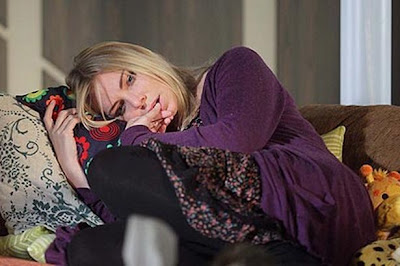 |
| Ronnie from Eastenders |
The Characterization of Bereaved Mothers: Are We Getting It Right? by Angela Smith
Ironically, script submissions are often invited by TV and film producers with the emphasis on creating strong female characters. However, soap writers seem all too eager to completely and utterly smash these women down to the point of no return. It’s one thing to cleverly show different sides to their personality, but to completely destroy a useful and inspirational character is unnecessary and sadistic.
 |
| Yerma (1999) |
Yerma: The Pain, Heartbreak and Destruction of Infertility and Patriarchy by Leigh Kolb
Yerma’s words about the deep, miserable feelings surrounding infertility are poignant and heartbreakingly accurate. While much is going on in this film worth discussing–the patriarchal culture that arranges marriages and ties a woman’s worth solely to her ability to have children, obviously, and the immediate blame of the woman when a couple can’t conceive–Yerma’s struggle with infertility is one of the most accurate portrayals of that grief that I’ve ever seen.
 |
| A mother makes a difference. |
How a Flatliners Ad During a Movie Showing Made This Woman Walk Out by Pandora Diane MacMillan
I think this was one of the very first film showings that included a special, movie-only commercial meant to promote a new line of Levi’s jeans. The new line was apparently to be called “Flatliners,” yes, a promotional tie-in with that film, with the association that Flatliner Jeans would make the wearer look slim and “flat.” They also apparently thought it would be cute, hip, and hilarious to display the young male wearer of said jeans as DEAD and FLATLINED and to have someone jumpstart the person’s heart with defibrillators(!).
 |
| Days of Our Lives |
Days of Our Lives: Punishing Nicole’s Fetus by Janyce Denise Glasper
Days of Our Lives writers appeared to be Nicole’s biggest adversaries, judgmentally weaving a “how can we top that last terrible heartbreak for this evil woman who committed paltry crimes at best?” Horrific enough that she went through the tragedy of losing a baby once, but to push her into repeating that trauma in an astonishingly grotesque manner seemed much uncalled for and heinous. They made an example of out this Mary Magdalene pariah, promising miraculous motherhood twice and ripping it from her grasp, a condemnation for her tumultuously stormy past.
 |
| Away We Go (2009) |
Away We Go: Infertility and the Indie Film by LD Anderson
I found Tom and Munch to be hurtful caricatures of infertile couples. I understand that the desire to have children of one’s own loins is very natural, and that the inability to do so can be extremely painful. However, I would dare say that society’s insistence on considering adoption second-rate, and its complete failure to recognize childless couples as families, makes it far more painful than it has to be.
 |
| Pixar’s Up (2009) |
When Life Gives You Infertility, Make Your House Fly: Found Family in Up by Talia Liben Yarmush
I can tell you that the first theme, miscarriage, is shown in only seconds, and it is a scene that will remain with you throughout the entire film. In thirty seconds, this animated family film is able to portray the loss in such a visceral way that even if you have never had an experience like it, you will be brought to tears. And I can tell you that the second theme, living childfree, is complicated and filled with mixed emotions.
 |
| “You are not alone in this.” |
Empty Wombs and Blank Screens: The Absence of Infertility and Pregnancy Loss in Media by Leigh Kolb
I try to rationalize why portrayals of infertility and pregnancy loss are so rare. Where is the action, a scriptwriting professor scribbled in my margins when I had too much internal dialogue or a conversation between female friends. There’s not much action in infertility. The struggle is literally and figuratively inside.
But then I realize I’m just making excuses for Hollywood. Infertility and pregnancy loss are rich with story-line possibilities. The very nature of these tragedies is in lock-step with literary conflicts and archetypes. (Wo)man vs. self? Check. (Wo)man vs. nature? Check. Journey/quest? Check. Unhealable wound? Check.
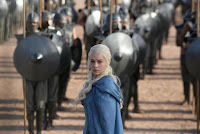 |
| Game of Thrones |
The Mother of Dragons Is Taking Down the Patriarchy in Game of Thrones: Daenerys, Feminism and Motherhood by Megan Kearns
Reproduction & Abortion Week: Mother and Child by Candice Frederick (first published on April 25, 2012)
What to Expect When You’re Expecting: Unexpected Gem by Robin Hitchcock (first published on October 12, 2012)
Written by Leigh Kolb for our theme week on Infertility, Miscarriage, and Infant Loss.
“Women’s stories are too often dismissed. A male editor I once worked with tried to dissuade me from the personal: ‘Who cares about what happened to you?’ The most subversive thing a woman can do is talk about her life as if it really mattered.
It does.”
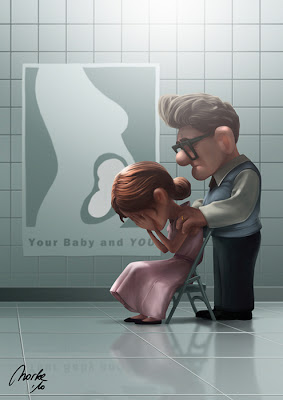 |
| A moving still from Up. |
 |
| Days of Our Lives, one of four surviving daytime soap operas on television. |
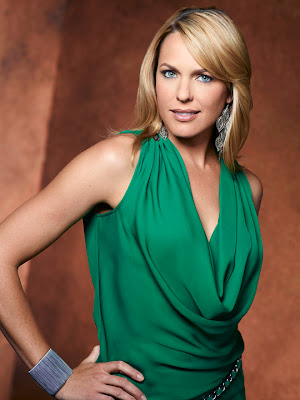 |
| Nicole Walker (Arianne Zucker) is one of the resident bad girls on Days of Our Lives. |
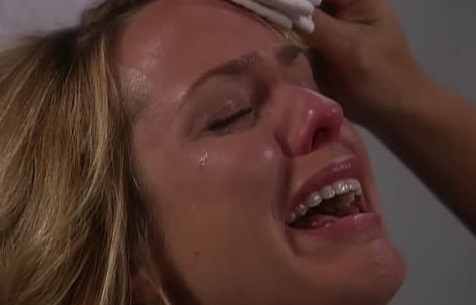 |
| Nicole (Arianne Zucker) in the throes of a heartbreaking miscarriage. |
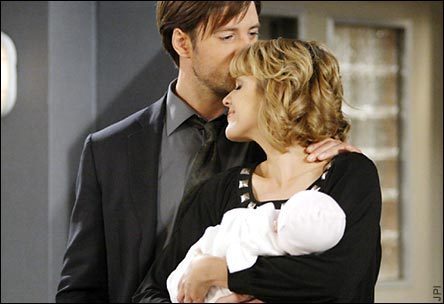 |
| Nicole passes off stolen Sydney as daughter to her and EJ Dimera (James Scott). |
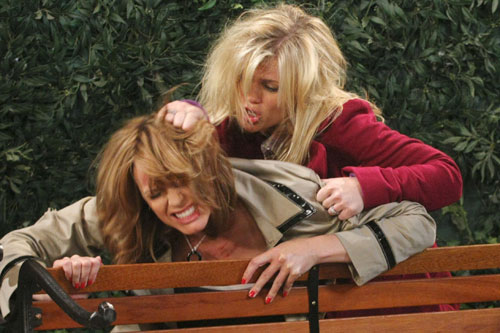 |
| Samantha (Alison Sweeney) and Nicole (Arianne Zucker) are back to their public displays of violent affection. |
| Nicole (Arianne Zucker) is about to receive devastating news on fate of second “miracle” baby. |
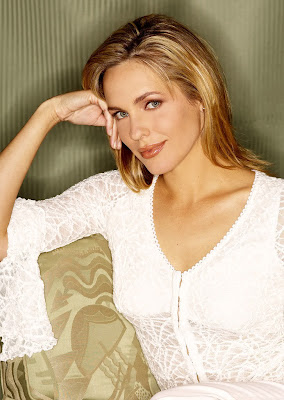 |
| Under God’s “roof,” Nicole (Arianne Zucker) is on her best behavior. |
 |
| Movie poster for Yerma |
Written by Leigh Kolb for our theme week on Infertility, Miscarriage, and Infant Loss.
In 1934, Spanish writer Federico García Lorca wrote the play Yerma, and it has been performed regularly since its opening that year. In 1999, a Spanish film was released, directed by Pilar Távora.
 |
| Juan and Yerma appear happy on their wedding night |
 |
| Yerma has tried for years to become pregnant, and her friend announces she’s gotten pregnant after just a few months of marriage. |
 |
| Yerma slips deeper into an obsessive depression as time goes on. |
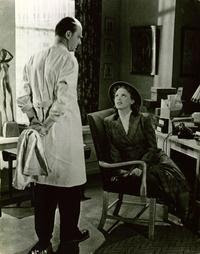 |
| Else confides in the doctor that she’s had an abortion. He judges, but quickly moves on to helping her. |
As Else leaves the doctor’s office, a mother is struggling and Else offers to hold her baby for her. The way she looks at the child is full of love and deep longing.
“Lief, can you forgive me?” she cries.
He says it’s his fault, but she responds,
“It’s what we wanted, both of us. I should have told you long ago.”
“Don’t worry, darling, we’re together,” he says.
 |
| Else weeps with joy when the doctor confirms her pregnancy. |
 |
| Else and Lief celebrate the news. |
 |
| Lief visits Else and their new daughter at the clinic. |
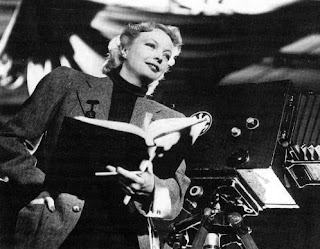 |
| Alice O’Fredericks, Danish writer, director and actor |
 |
| Tell Me You Love Me poster |
Before Lena Duhman burst onto the HBO scene and started ruining lives with her depictions of graphic and awkward sex on screen, a show existed called Tell Me You Love Me. Created by Cynthia Mort, and airing on HBO for only one season, the show centered around four upper middle-class white couples in different stages of their lives, trying to keep their shit together and their relationships functional. I tend to enjoy watching people on screen struggle with interpersonal conflict, fail miserably at resolving it, and then end up in intensive psychoanalysis and sex therapy where they experience embarrassing emotional breakdowns. YOLO, right?
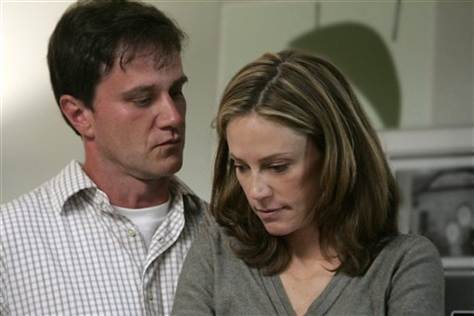 |
| Dave and Katie in Tell Me You Love Me |
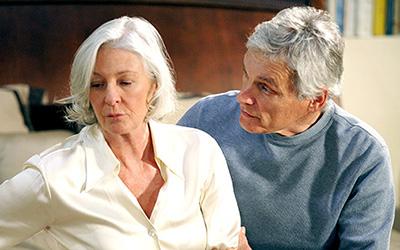 |
| Dr. Foster and Arthur in Tell Me You Love Me |
 |
| Jamie and Hugo in Tell Me You Love Me |
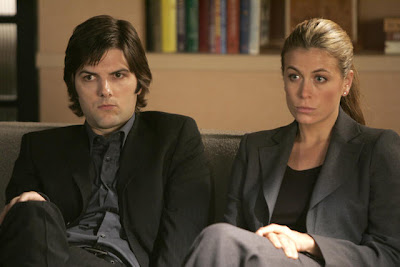 |
| Palek and Carolyn in Tell Me You Love Me |
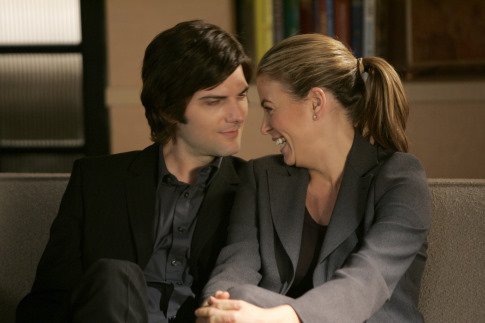 |
| Palek and Carolyn in Tell Me You Love Me |
 |
| Publicity photograph used for Peekaboo |
I completed my short drama Peekaboo nearly two years ago, but I started writing it about three years before that. I had two friends who had experienced baby loss, one to miscarriage and one who had given her baby up for adoption. I had a dream one night that merged these two stories together; this was the beginning of Peekaboo, which is about a couple who has lost three babies to stillbirth. I wrote a first draft of the script then started researching in great detail as I developed the script. I was shocked to discover that hardly anything had been made about this subject before.
Because I had no funding to make Peekaboo, I had to crowdfund, asking for donations to help me raise the money I needed for the film. This was a blessing in disguise, because as well as raising the money, I met a great number of parents via social media who had lost babies, and I got to know some of them well. With their help, I was able to complete the film to a high standard and use two of the UK’s finest actors in the lead roles.
I was very happy with Peekaboo when it was completed, and it was met with great acclaim from those who saw it. However, I was very disappointed with the lack of film festivals that programmed it. Compared to my previous films, this screened at far fewer festivals. The subject matter was seen as too depressing. This was very frustrating as I made the film to show people who hadn’t been through losing a baby what really happened. It told me audiences still aren’t ready to look at this. There is such a silence around baby loss. While I was in the process of making the film, many people asked me, “Why are you making a film about that?” On top of the grief that the parents have been through, there is another burden for them–to keep quiet and not upset people by mentioning their baby.
Not being one who’s put off easily, this fueled me to want to look at the subject matter again, and I felt a documentary would be more powerful. There is no one better equipped to tell stories of baby loss than the parents themselves. Due to the fantastic contacts I’d already made on Peekaboo, I had a pool of parents all very keen to take part in the film, and I started selecting the right characters and stories for Still Born, Still Loved.
 |
| Mel Scott with her son Finley |
Synopsis:
How do you survive when the baby you’ve been expecting for months dies before you have the chance to ever really know them? When on the day you were supposed to be bringing your baby home, you have to carry a tiny coffin and see them buried in the cold, hard ground? What happens to all the love you feel for your child? How do you move forward with your life with a heavy heart and empty arms?
This documentary goes right to the heart of the human suffering caused by the loss of a tiny life. There is no greater suffering for any parent to bear than the death of their child.
Our film is special because each of the stories within it has a powerful, life-affirming message, as the parents involved work through their suffering to accomplish something really spectacular in memory of their baby. The outcome will be uplifting and inspiring and will highlight how even the most vulnerable people can triumph in the face of adversity.
 |
| Nicola Harding with her daughter Emily |
In our film, we also use parents’ own photographs and video footage of their time spent with their babies when they were stillborn. This, of course, is both very powerful and greatly upsetting, but I feel it is important for people to really see this firsthand. It certainly makes a huge impact and shows that these babies were a real-life son or daughter to these parents who love them dearly and always will.
 |
| Christmas decorations in memory of Harriet and Felicity Morris |
I’m really proud of the work we’re doing around stillbirth and baby loss, and I’m very grateful to all those who are supporting us. Together we will break the silence.
 |
| Finley Scott in his coffin |
 |
| Buffy talks to Spike about her pregnancy in the Season 9 comic |
The vampire in question mocks her, saying he can smell the sedatives, he can smell the baby, and it’s going to be easy to kill them both. Cue vampire dust, and Nikki’s Watcher Crowley rushing over to make sure she’s alright. Crowley thinks it’s unbelievable that the Council made her go through with rite of passage, given that she’s in such a “delicate condition.” Nikki brushes it off, telling him that the job doesn’t stop because her life got in the way. “In the meanwhile, can you at least tell me…who the father is?” says Crowley.
Cut to Buffy, present day, who’s just been asked the same question by Dawn. “I have no idea,” she says.
When the end of the first volume of Season 9 ended with Buffy’s positive pregnancy test, my faith in the comic book extension of Buffy came rushing back. After the TV show ended in Season 7, Joss Whedon and a group of other writers returned to the story in comic book form, but Season 8 bit off more than it could chew. Taking advantage of the unlimited scope (and reduced production costs) this new medium gave them, the comic book writers dreamed up alternate realities to their hearts’ content, and Season 8, while intriguing, was often hard to follow.
 |
| Dawn comforts Buffy in Season 9 |
So far, Season 9 has had a much smaller, more intimate focus. The world lost its connection to magic at the end of the previous season, something Buffy is responsible for. She’s living in San Francisco, trying to make ends meet by making coffee. As far as tone goes, it’s very reminiscent of Season 6—it’s about dealing with fallout, navigating uncertainty, and trying to figure out what survival means when you`re talking about the everyday instead of slaying monsters.
Buffy’s relationship to her pregnancy was a trigger that had the potential to change the story and the characters’ world fundamentally. The only parallel I can think of that comes close is the way Buffy`s life changed after her mother died, and she sacrificed herself to save Dawn at the end of Season 5. In the same way that those events set up Season 6, which was an incredibly compelling engagement with loss, depression, addiction, and responsibility, Buffy`s pregnancy opened up a storyline that looked like it would be a smart and painful discussion of reproductive choices, motherhood, agency, and trying to understand the future.
But here’s the thing: Buffy’s not actually pregnant.
Instead (in a bizarre, inexplicable, and incredibly frustrating plot twist) her consciousness has been transplanted to the Buffybot by Andrew, who’s taken it upon himself to give her a “normal” life by hiding her body away in a 50s-esque suburban paradise while an assassin hunts her robot replacement—without checking in with her or letting her know someone’s hunting for her, of course. The positive pregnancy test was apparently a by-product of the robot technology, but that’s an explanation that’s still lost on me. And though this leads to some really interesting explorations of “normalcy,” it reads to me like a missed opportunity of massive proportions.
The book had opened with a Buffy who had no idea how she felt about her pregnancy. She blacked out at a party, and she has no idea what happened or what might have been done to her (this, it turns out, was when Andrew’s body-switching hijinks ensued). She was beginning to undertake the difficult work of deciding what she wanted to do with her future and her body, and trying to reconcile her long-standing desire for normalcy with her anxiety about the uncertain circumstances under which her pregnancy occurred and her identity as a Slayer—which she realizes isn’t just a duty, it’s a drive.
 |
| Buffy asks Robin Wood about having a Slayer for a mother |
Buffy asks Robin Wood to give her his perspective on growing up with the Slayer for a mother. “If you want an easy answer, you won’t get it from me,” he tells her; his childhood was raw and painful, and he grew up knowing that his mother could have walked away from him, but she never could have walked away from the job. He tells her about learning about vampires and demons before he heard about the Tooth Fairy and about lying awake waiting for his mother to come home, about how he got more support and family from Nikki’s Watcher than he did from her. He’s not sure what to tell her. It’s fascinating watching Robin try to vocalize what he thinks his mother should have done—would he rather have had her put him up for adoption? Not try to have a family at all? He’s still harboring resentment toward his mother for the choices she made throughout his childhood, but he’s also not sure Buffy would be repeating history if she chose to keep her child—and he’s also deeply cognizant of the context in which his mother made the choices she did.
I loved this moment because it broadened the scope of the conversations we have about reproductive decisions to include the complexities of life after birth. For Nikki, and for Buffy, it’s not just about this do-or-die moment where you choose the kind of future you’re going to have. Reproductive choice is something that’s repeated and remade and takes on new weight throughout the years, and it’s just as applicable to questions about raising your child and choosing your family as it is to questions about adoption and abortion.
This is the line of questioning that drives Buffy’s reproductive decision. She’s been thinking about what kind of mother she could be, and whether she could turn away from her identity as the Slayer to pursue a different kind of future. That’s the decision that Nikki made when Robin was born, but her life away from slaying didn’t last long. “She got an itch before I was even a year old. And we ended up right back where Crowley didn’t want us,” Robin says. “Patrolling while I waited for the night she didn’t come home. It took me a long time to realize why. She was chosen, Buffy. Just like you. No matter where she went, no matter how much she wanted to be with me. She wasn’t strong enough to ignore it. She had to be a Slayer.”
 |
| A depiction of Buffy’s confusing universe in the Season 9 comic |
Buffy decides she could navigate the dual responsibilities of slaying and motherhood, but she also realizes that it wasn’t the only thing on her mind. Her decision also had to be about where she is in her own life, and about the fallout and tense relationships and financial responsibility she’s still trying to understand. She takes stock of where she is, and she’s not sure she’s ready to expand her chosen family to one that includes a child.
“It’s not the slaying. It’s me,” she says, sitting on the side of an abandoned pool with Spike. She’s going to have an abortion, and she asks Spike to come with her when she does it. Spike stands up and reaches for her hand. “Yeah,” he says, and nothing more. It’s a lovely, simple scene that speaks volumes to both of their characters and to how Buffy’s life and support system has changed since the TV show ended.
What I don’t understand is why after doing all of this heavy lifting and complex narrative development the writers chose to walk away. I loved this storyline, and I wanted to see them follow through with it. I wanted to see how Buffy’s relationship to her choices would evolve. I wanted to hear more from Robin Wood about how the choices he and his mother made complicate his continued involvement in this world. Though we do get to see an interesting exploration of Buffy’s loss and confusion after she realizes she was never pregnant, the weird fake-robot-pregnancy explanation feels far too convenient—and it points to some of my larger frustrations with sci-fi pregnancy storylines.
In the world of science fiction, a pregnancy is much more likely to be a flimsy excuse for deus ex machina than the beginning of a complex and nuanced exploration. Pregnancies happen and gestate overnight, and they lead to spiders that claw their way out of stomachs and babies whose blood is the cure for specific kinds of cancer or which opens portals. More often than not, these stories skip over any kind of emotional exploration of pregnancy, choice, or loss and fail to recognize that pregnancy often involves a difficult engagement with people’s own families, pasts, and fears.
There are some notable exceptions. But pregnancy should not be treated as a one-episode storyline, and reproductive decisions shouldn’t be introduced as monster-of-the-week plot twists.
What’s more, there are a lot of parallels between the 24-hour sci-fi pregnancy and the Convenient Miscarriage trope, in which characters who don’t want to have a child but don’t want to have an abortion miscarry at an opportune moment in the plot so they don’t have to make a decision. It’s a cop-out of a plot device, and the fact that it’s one of the dominant representations of miscarriage in pop culture is deeply problematic. Convenient Miscarriages gloss over an event many people experience as deeply traumatic and have a complicated relationship with, even if they’d been considering having an abortion.
 |
| Buffy tells Spike she’s having an abortion |
The rest of the comic wavers back and forth between this kind of Convenient Fake Pregnancy and a continued exploration of what this experience means for Buffy. She’s struggling to understand the loss of her pregnancy, and the writers’ exploration of what it means to lose a child you’d made the decision not to keep is compelling. She’s also sure this is one more piece of proof that she’s a failure at anything to do with the “real world,” and her coming to terms with the fact that what she thought was a real-world decision with real-world implications was just “more bizarre Slayer crap” is really moving.
And though I’m not wild about Buffy’s pregnancy being framed as a “fake problem,” I’m intrigued by this continued exploration of what she went through, even if it’s only happening in a partial and underdeveloped way. I just hope it has consequences for the story as a whole. This was a smart, complicated discussion of reproductive justice and what it means to make a family—until it wasn’t. I’m frustrated that in a plotline where Buffy was asked to make a decision about her body, she wasn’t even in her body, and the choice wasn’t actually hers to make. I wanted to see the scene where Buffy went to the clinic with Spike. I wanted to see if she chose something else. However interesting this exploration of normalcy and loss was, I wanted to see the writers commit to the way her pregnancy would have changed her fictional world, to follow through and show Buffy negotiating the trauma of her history and the uncertainty of her future. More than anything, I really, really wanted to read the story they just walked away from.
Written by Megan Kearns as part of our Infertility, Miscarriage and Infant Loss Week. Originally published at The Opinioness of the World. Cross-posted with permission.
“No, I was always adamantly against having a pole vaulting career, even though it’s what most women want…In Canada, it’s very big up there. You know, it’s meet a nice guy, get married, vault some poles. But I never wanted that.
Of course it’s one thing not to want something. It’s another to be told you can’t have it. I guess it’s just nice knowing that you could someday do it if you changed your mind. But now, all of a sudden that door is closed.”
“So I can’t have kids. Big deal. Now there’s no one to hold me back in life. No one to keep me from traveling where I want to travel. No one getting in the way of my career. If you want to know the truth of it, I’m glad you guys don’t exist. Really glad.”
Written by Myrna Waldron.
| Sufferers of Feminist Burnout are advised that laptops don’t taste very good. (Source: SoftwareSourcery.Com) |
Signs and symptoms of Feminist Burnout include:
If you suffer from Feminist Burnout, You Are Not Alone! Sufferers are advised to remember that although there is no cure for Feminist Burnout, there will eventually be a cure for societal inequality.
———-
Myrna Waldron
 |
| Alias Ruby Blade poster |
Written by Leigh Kolb
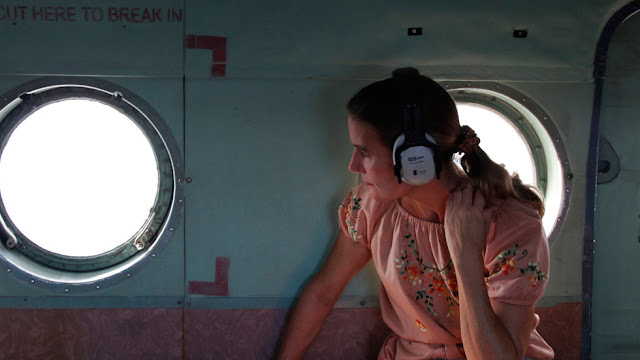 |
| Sword Gusmão, alias Ruby Blade, looks out over East Timor. |
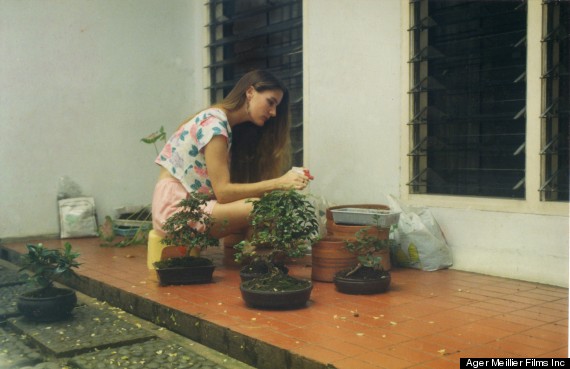 |
| Sword Gusmão received bonsai trees and tropical fish from Gusmão when he was a prisoner. |
Perhaps the filmmakers were trying to celebrate too much and lost some of Ruby Blade in the process.
Alias Ruby Blade is a stunning documentary that will do great work in educating people about not only the revolution in East Timor but also the powerful effect that individuals can have when they work toward justice–this, it seems, is definitely the filmmakers’ goal (husband and wife team Alex Meillier and Tanya Ager Meillier say, “… we are even more interested in the power of ordinary people to change the course of history. That’s what this film is really about”).
The film was featured in the Human Rights Watch Film Festival in March and the IDFA (International Documentary Film Festival Amsterdam). Tribeca granted it the 2012 Spotlighting Women Documentary Award.
As a feminist film viewer, I would have loved to see “Ruby Blade” herself more–and perhaps this story has the potential to inspire a Hollywood blockbuster with a powerful female protagonist. Let’s hope, at least. It could be Eat, Pray, Love: Bitches Get Shit Done Edition. We need to see what we’re capable of, and Kirsty Sword Gusmão is one strong example.